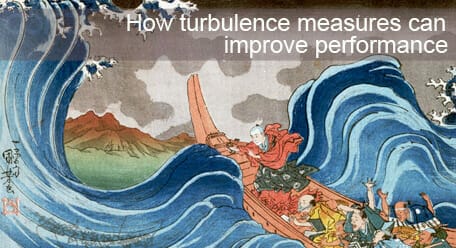Will Kinlaw, managing director of portfolio and risk management group at State Street Global Markets in Cambridge, tells Amanda White why new ‘turbulence’ indexes, measuring volatility and unusualness of returns, can guide investors in adjusting risk exposures and so improve returns.
State Street Global Markets has developed a series of “turbulence” indexes, measuring volatility and unusualness of returns, and is set to launch a complimentary systemic risk index in early December. The indexes are part of a portfolio of risk management tools that can be used by funds managers of all asset classes, or by pension funds at the total portfolio level as a stress test.
Turbulence, according to Will Kinlaw, managing director of portfolio and risk management group at State Street Global Markets in Cambridge, is a statistical measure for unusualness, the extreme relative to expectation, or the correlation of the unusual.
The development of the turbulence indexes are the culmination of 10-years research led by research director at State Street Associates, Mark Kritzman.
Kritzman, who also teaches financial engineering at MIT and is chief executive of Windham Capital, first published a paper in 1999 “Optimal portfolios in good times and bad” which looked at static portfolios’ resilience to turbulence and this research has more recently been applied to dynamic asset allocation. (See the research section for his most recent paper published in the FAJ: “Skulls, financial turbulence and risk management”.)
In quant terms, Kinlaw says it looks at multivariate z-scores, capturing extreme moves and unusual correlations.
Measuring unusualness, or those patterns of interaction that are closer to expected behaviour and those that are highly unlikely, has a dynamic asset allocation application according to State Street as the research shows a relationship between turbulence and performance.
“Turbulence in itself is non-directional, it is extreme or unusual, but we have found a link between turbulence and performance. We found that risky trades outperform over the long term, but they really blow up during turbulent times,” he says.
The research also found that turbulence is persistent.
“In financial markets turbulence may arise randomly but once it arrives it sticks around. So even if you can’t predict when it arrives, if you react quickly you can reduce risk. Our evidence suggests it is possible to improve performance by adjusting risk exposure in response to the arrival of turbulence.”
The Chicago Board Options Exchange Volatility Index (VIX), which shows the market’s expectation of 30-day volatility, is a commonly used risk filter (it is often referred to as the “investor fear gauge”).
While Kinlaw says the State Street turbulence indexes do not replace VIX, he thinks it has some limitations.
“If you have to pick one golf club, or one index, then VIX is good. But with the turbulence index, it is like have a whole bag of clubs because you can adapt it to any asset class,” he says.
VIX also applies to equity volatility only and at certain times, so it is not useful for various managers, such as currency managers during the dotcom bubble.
State Street has built eight indexes, and also builds customised indexes at clients’ requests.
Its eight turbulence indexes are: global asset classes, US equities, European equities, currencies, US fixed income, US Treasuries, credit, and global sovereign debt.
In complementary work, the most recent area of focus for State Street has been research done in the past 10 months on systematic risk.
“Where the turbulence indexes are measuring the degree of extremes, the systematic risk is measuring the fragility of markets. It looks at principal components analysis, or how tightly coupled are markets,” Kinlaw says.
“At the moment stock pickers are saying it is a difficult environment because stocks are responding to macro issues such as news from the Fed, rather than fundamentals. So we look at how related markets are to a small number of macro factors.
“As an example if you go to two restaurants, at the first you ask people what they liked best and you get different answers from different people, some liked the chef, some the bar, some the wine list.
“At the second restaurant everyone says they like the chef the best. The systematic risk at the second restaurant is higher. But it can also create false positives, if the chef leaves that restaurant then it is in trouble, but if he stays it’s not. So you can have high systematic risk but no drawdowns.”
This new research demonstrates how the opportunity set available to stock pickers changes when systematic risk goes up and down.



